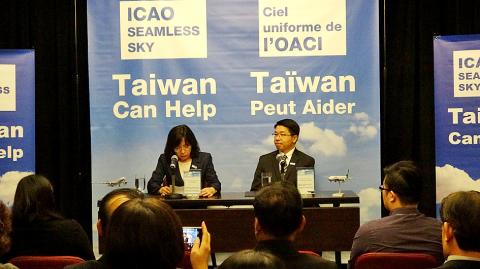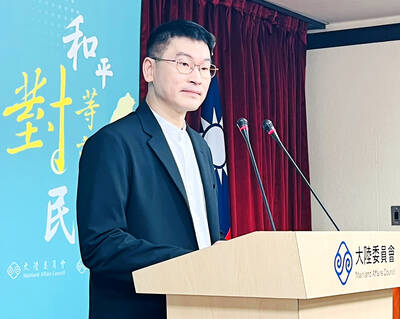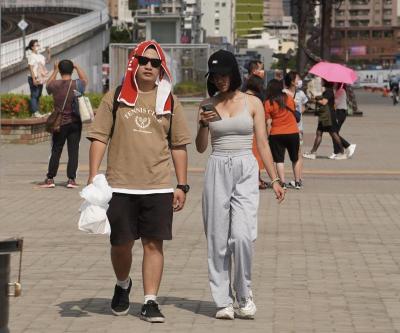The Ministry of Foreign Affairs yesterday thanked 12 allies and like-minded countries for supporting Taiwan’s participation in the International Civil Aviation Organization (ICAO) assembly in Canada, although it was again rejected entry this year.
A UN specialized agency, the ICAO is holding its 40th three-yearly assembly in Montreal until Friday next week.
Expressing regret over Taiwan again being rejected by the organization due to political factors, the ministry said that the Taipei Flight Information Region managed by the Civil Aeronautics Administration is crucial, as Taiwan is an aviation hub connecting Northeast and Southeast Asia.

Photo: CNA
Taiwan was first denied participation at the assembly in 2016, it said.
Nonetheless, the nation has garnered support from more countries than in previous years, it added.
In an unprecedented milestone, the foreign ministers of the US, Canada, the UK, France, Germany, Italy and Japan in April said in the communique of their G7 meeting in France that they “support the substantive participation of all active members of the international aviation community in ICAO forums. Excluding some of its members for political purposes compromises aviation safety and security.”
The ministry said that 12 of Taiwan’s 15 diplomatic allies — Belize; Guatemala; Haiti; Honduras; Nauru; the Marshall Islands; Palau; Eswatini; Tuvalu; Saint Kitts and Nevis; Saint Lucia; and Saint Vincent and the Grenadines — wrote to ICAO president Olumuyiwa Benard Aliu or ICAO secretary-general Liu Fang (柳芳) to urge Taiwan’s participation in the assembly.
Those allies would continue speaking up for Taiwan at the assembly or express their support by attending receptions in Canada hosted by a Taiwanese delegation, it said.
Former NATO secretary-general and Danish politician Anders Fogh Rasmussen on Friday last week wrote in an op-ed in Canadian daily the Globe and Mail that “Taiwan was a founding member of the ICAO, but China is again seeking to deny Taipei access to the meeting, even though Taiwanese airspace serves 1.7 million flights a year.”
“Even though Taiwan is playing by the rules, the democratic world responds with indifference, or even fear of upsetting China,” which sends “a signal that Beijing can demand and threaten its way around democratic capitals,” he wrote.
Reminding the ICAO of its goal of promoting a “seamless sky” and “uniting aviation,” the ministry reiterated its call for the organization to seek proper means to include Taiwan, instead of being manipulated by a single member state.

An essay competition jointly organized by a local writing society and a publisher affiliated with the Chinese Communist Party (CCP) might have contravened the Act Governing Relations Between the People of the Taiwan Area and the Mainland Area (臺灣地區與大陸地區人民關係條例), the Mainland Affairs Council (MAC) said on Thursday. “In this case, the partner organization is clearly an agency under the CCP’s Fujian Provincial Committee,” MAC Deputy Minister and spokesperson Liang Wen-chieh (梁文傑) said at a news briefing in Taipei. “It also involves bringing Taiwanese students to China with all-expenses-paid arrangements to attend award ceremonies and camps,” Liang said. Those two “characteristics” are typically sufficient

A magnitude 5.9 earthquake that struck about 33km off the coast of Hualien City was the "main shock" in a series of quakes in the area, with aftershocks expected over the next three days, the Central Weather Administration (CWA) said yesterday. Prior to the magnitude 5.9 quake shaking most of Taiwan at 6:53pm yesterday, six other earthquakes stronger than a magnitude of 4, starting with a magnitude 5.5 quake at 6:09pm, occurred in the area. CWA Seismological Center Director Wu Chien-fu (吳健富) confirmed that the quakes were all part of the same series and that the magnitude 5.5 temblor was

The brilliant blue waters, thick foliage and bucolic atmosphere on this seemingly idyllic archipelago deep in the Pacific Ocean belie the key role it now plays in a titanic geopolitical struggle. Palau is again on the front line as China, and the US and its allies prepare their forces in an intensifying contest for control over the Asia-Pacific region. The democratic nation of just 17,000 people hosts US-controlled airstrips and soon-to-be-completed radar installations that the US military describes as “critical” to monitoring vast swathes of water and airspace. It is also a key piece of the second island chain, a string of

The Central Weather Administration has issued a heat alert for southeastern Taiwan, warning of temperatures as high as 36°C today, while alerting some coastal areas of strong winds later in the day. Kaohsiung’s Neimen District (內門) and Pingtung County’s Neipu Township (內埔) are under an orange heat alert, which warns of temperatures as high as 36°C for three consecutive days, the CWA said, citing southwest winds. The heat would also extend to Tainan’s Nansi (楠西) and Yujing (玉井) districts, as well as Pingtung’s Gaoshu (高樹), Yanpu (鹽埔) and Majia (瑪家) townships, it said, forecasting highs of up to 36°C in those areas